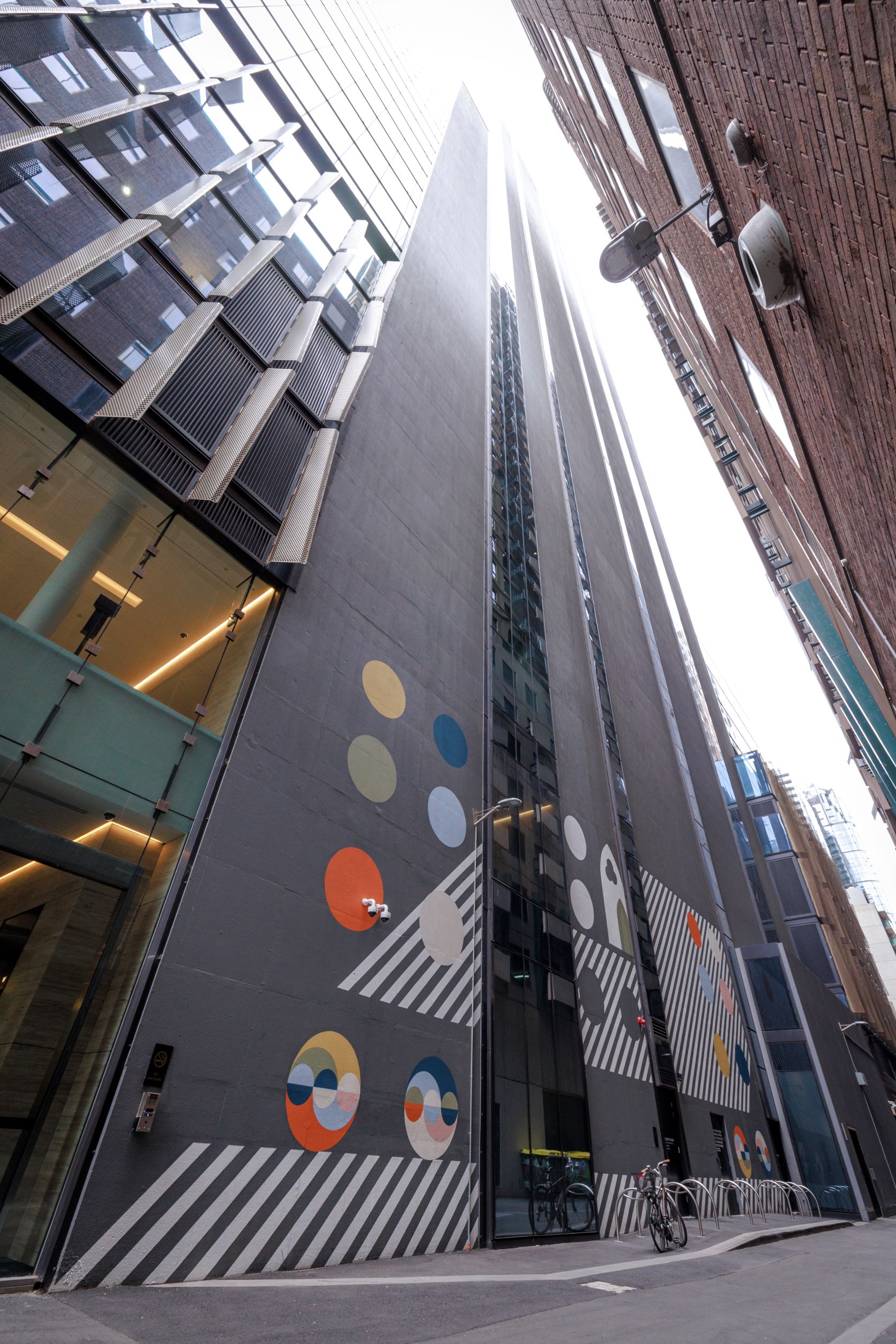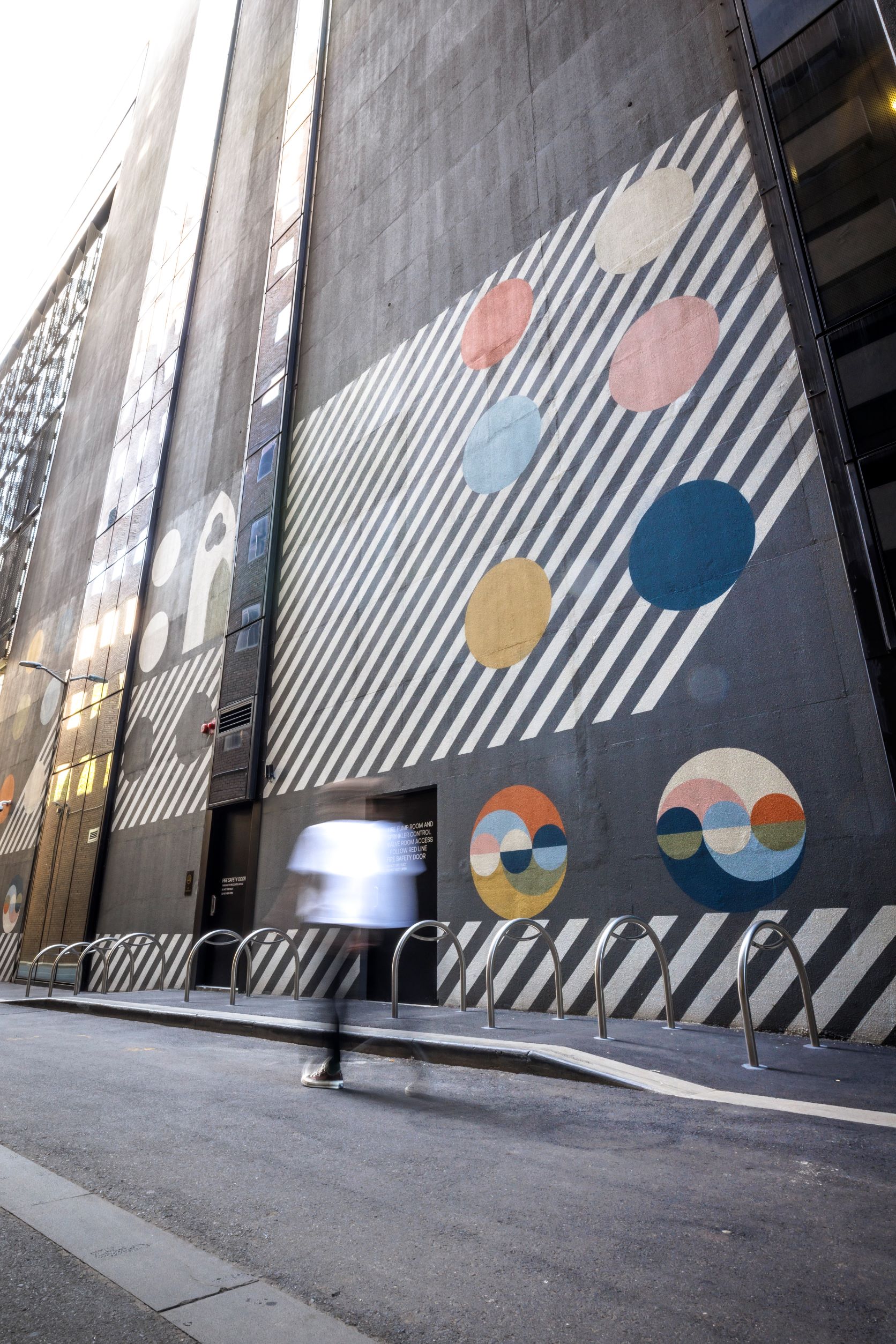Untitled Energy 1
.jpg?sfvrsn=9ca8d9be_1)
.jpg?sfvrsn=c187a186_1)
.jpg?sfvrsn=bcadb03f_1)
Untitled Energy 1, 2021. Broached Commissions, Australia, est. 2010 . And John Warwicker, Australia, b. 1955
Painted Mural
Broached Commissions is a storytelling production house. The Broached stories are articulated in the form of applied arts collections and public art for medium to large precincts. Their applied arts collections have been honoured with curated shows at the UCCA (Beijing) and the NGV (Melbourne), their work is collected internationally. As creative directors of public space Broached works with interdisciplinary design and developer teams to frame narratives that express the special conditions of each site.
Born in London in 1955 and now living in Melbourne, John Warwicker is a legendary typographer, graphical and interactive media artist. He is co-founder of the award winning multi-disciplinary studio Tomato and has produced several notable record sleeves for groups including The Rolling Stones and Iggy Pop, whilst video Djing for techno band Freur / Underworld.

This mural explores the relationship between the church and the modern city. A small representation of a church sits at the edge of a grid, like the gridded form of Melbourne city itself. Within the church is a trefoil, a feature in many neo-Gothic churches like the one at Wesley Place, which symbolises The Holy Trinity. This form is transformed into a modernist design in the circles below. By linking 19th C and the 20th C design the artists connect those two distinct forms of power, the feudal and the modern democratic capitalist systems together.
In the neo-gothic era modernity was just beginning to sprout, the Industrial Revolution was transforming how people worked, how they moved from place to place with the advent of trains and, with the creation of photography, how places and experiences were documented changed forever. Not surprisingly such radical changes resulted in a design movement glorifying a period in the past, the gothic era, as being representative of good Christian virtues.

It could be argued that Modernist architects were the first to believe that the present moment was the most important, that the potential of the present held everything required for fulfilment. Yet, many aspects of the Protestant, pre-modern way of living remained in place. One essential ingredient was believing hard work to be a virtue. The artwork reflects this move from a religious decorative use of three circles to one that conveys them as equally harmonious, but engaged in a cycle of non-spiritual, virtuous productivity. Of course, the church was always tied up in the process of acquiring and earning money from private property. It is simply that as we shifted from feudal societies to market democracies the role of the Church as a central social, political and economic force began to diminish. But many of the ideas about what constitutes virtue and its relationship to productivity remain in our modern life.